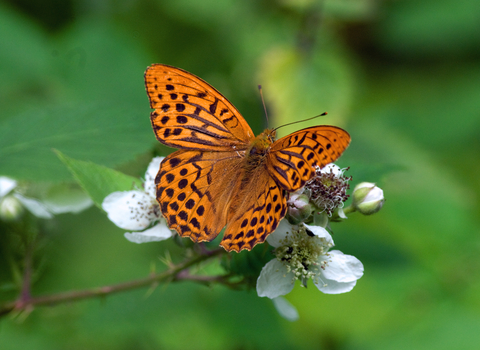
Silver-washed fritillary ©Don Sutherland
Silver-washed fritillary
The silver-washed fritillary gets its name from the silver streaks on its underside. It is on the wing in summer, preferring sunny glades in woodlands. Despite declines, its range has spread over recent years.
Enw gwyddonol
Argynnis paphiaPryd i'w gweld
June to AugustSpecies information
Ystadegau
Wingspan: 6.9-8.0cmCommon.